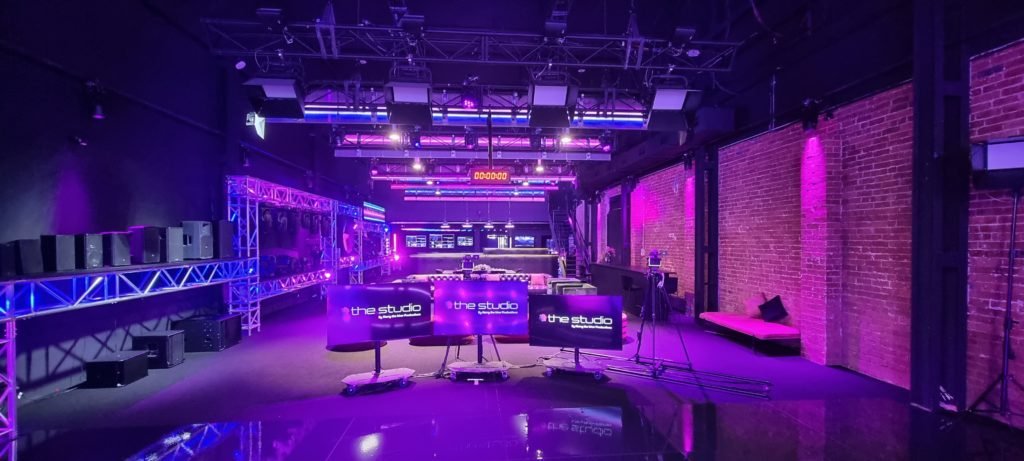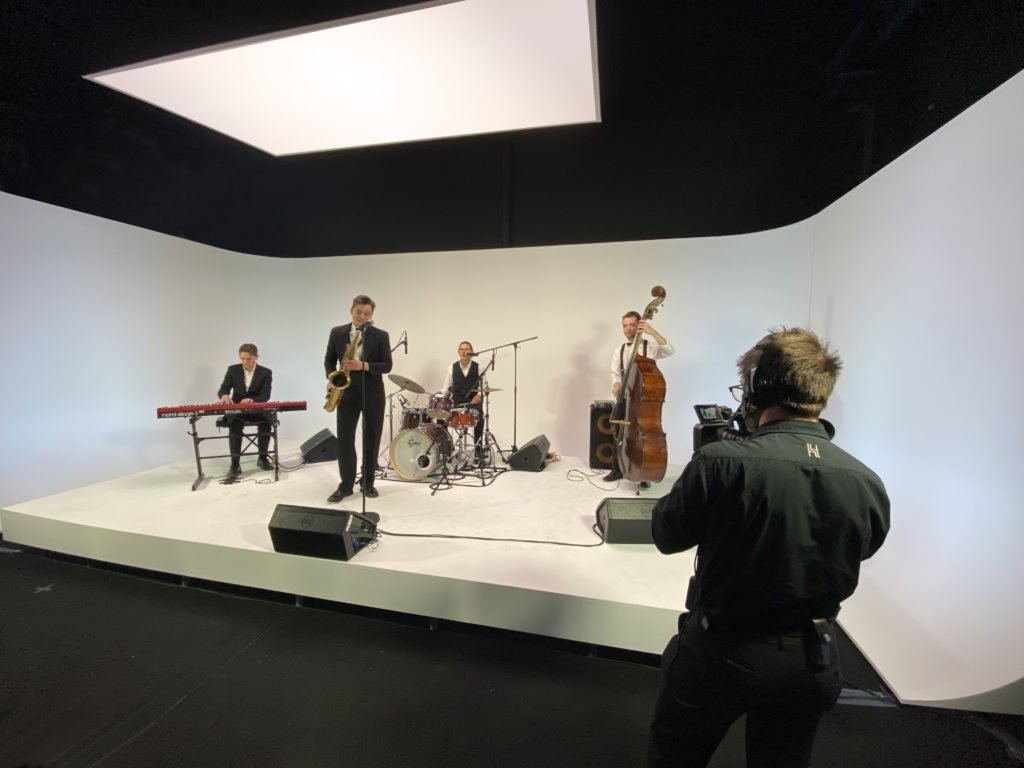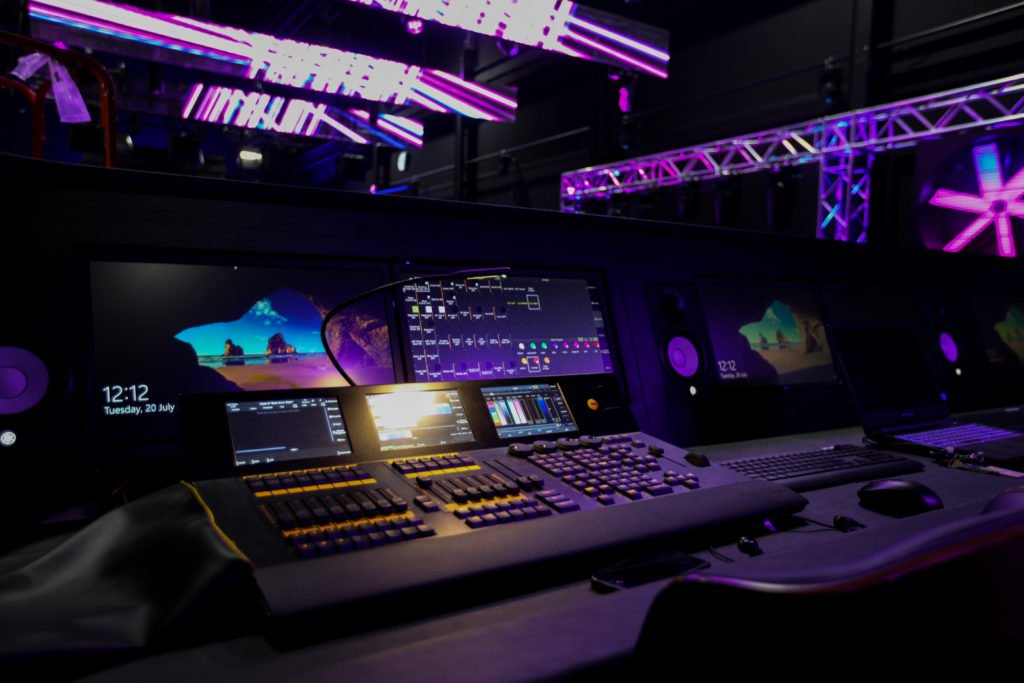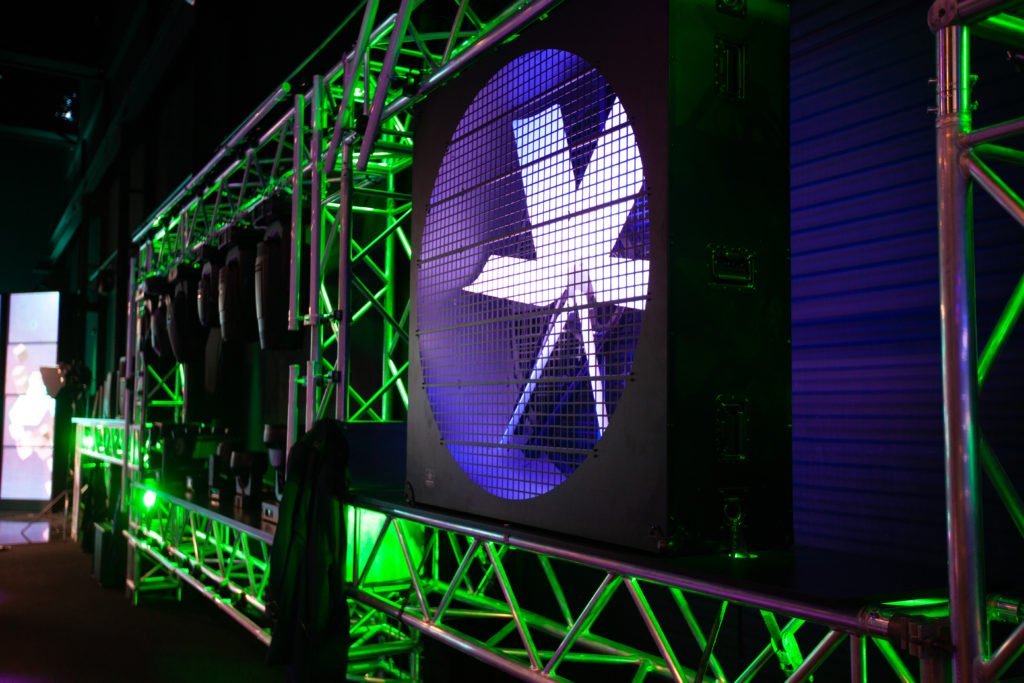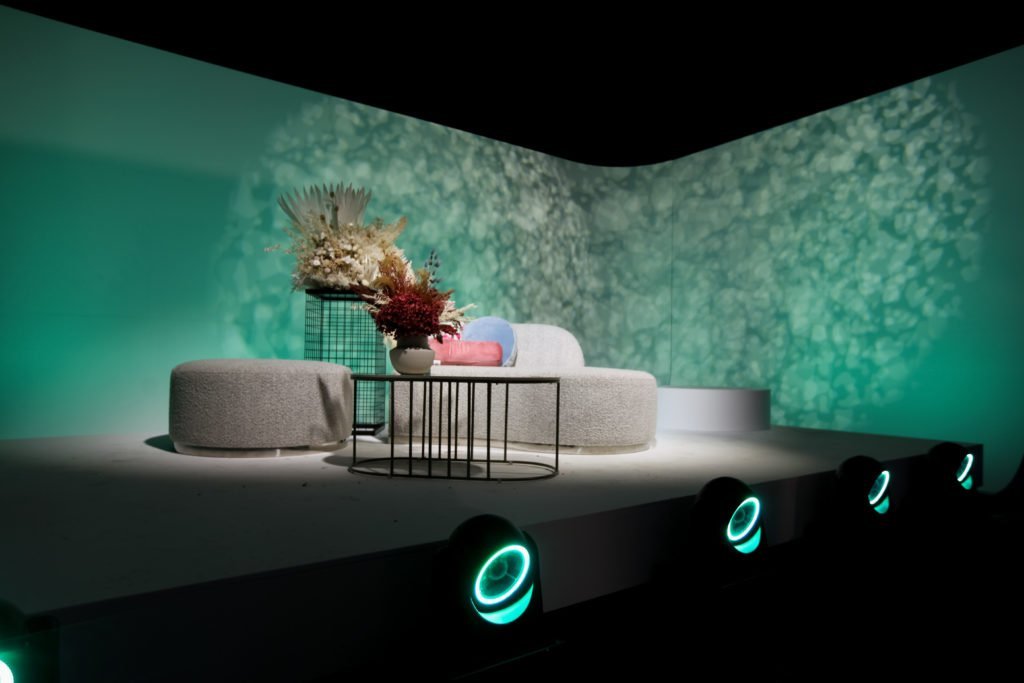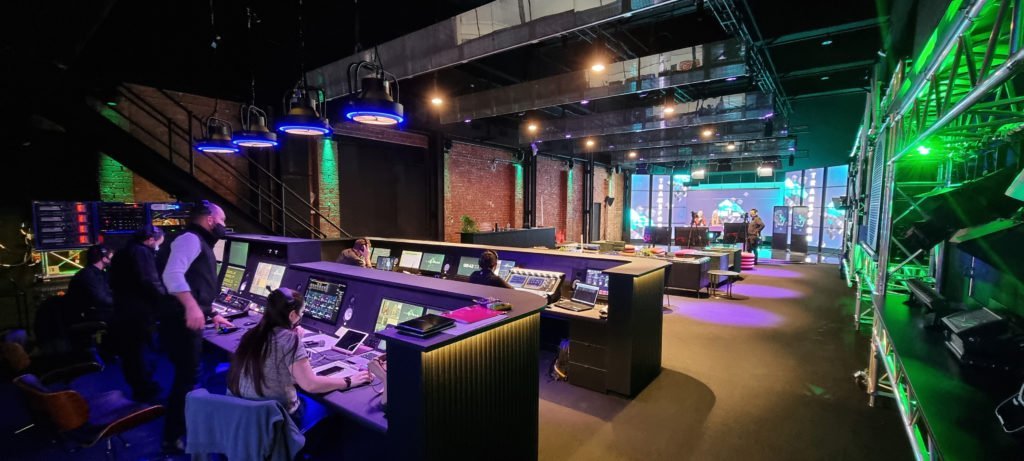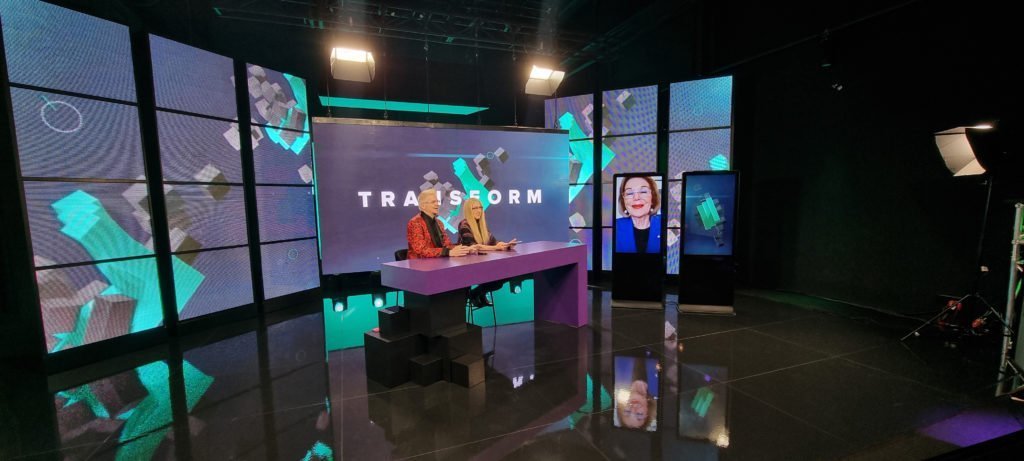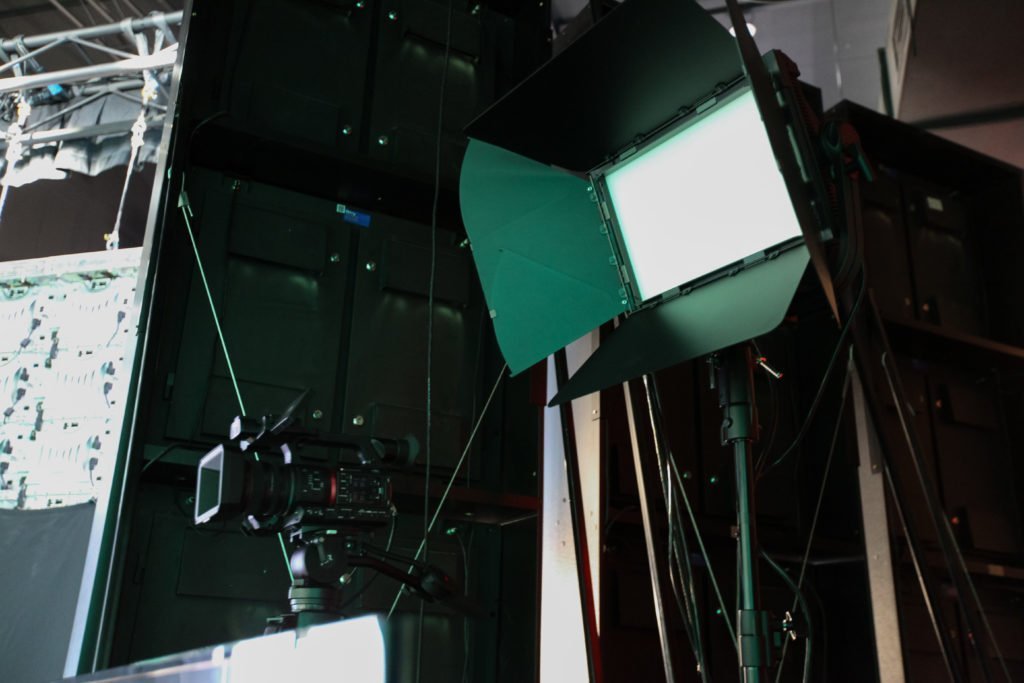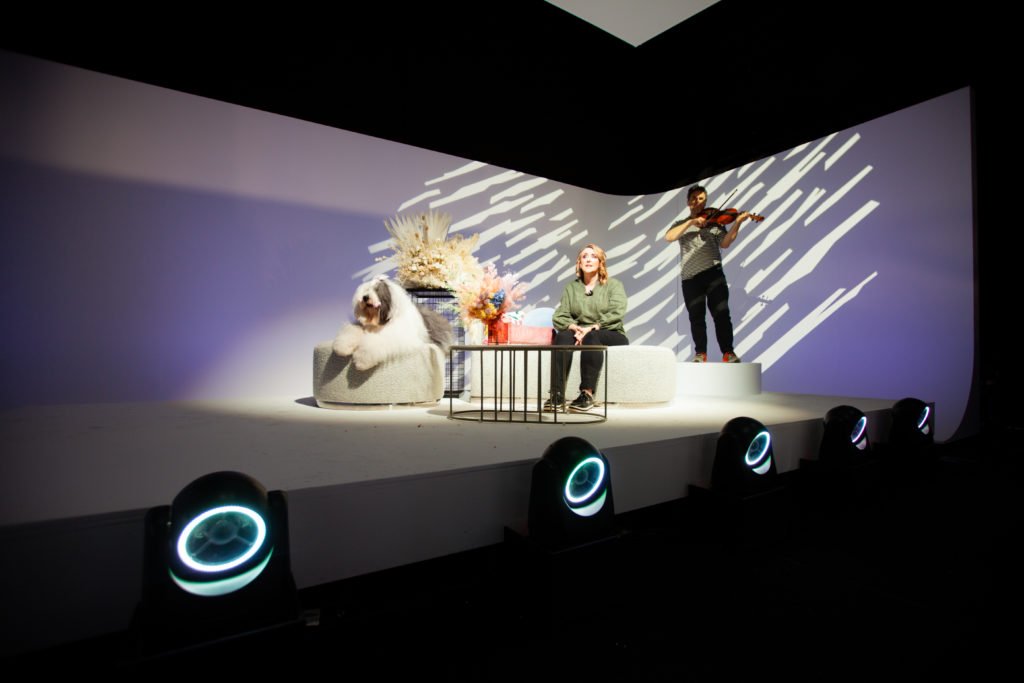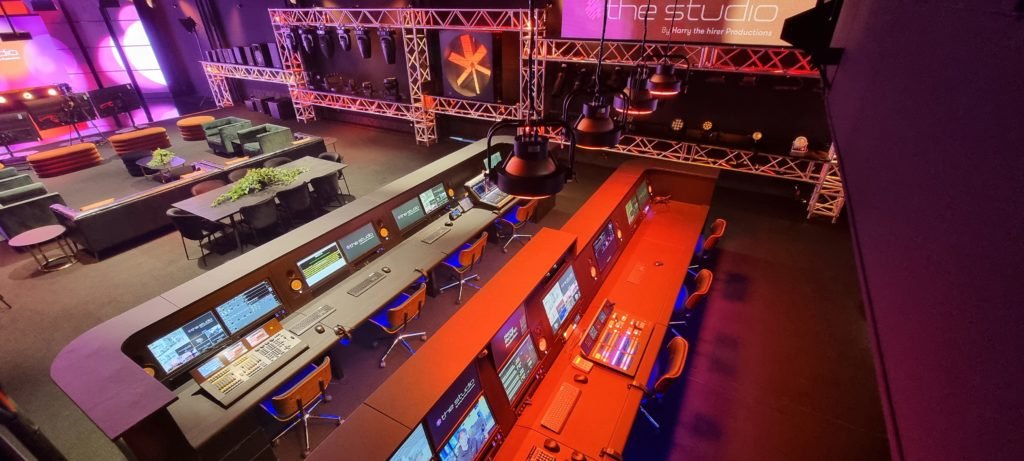News
12 Oct 2021
Lighting a Multipurpose Studio
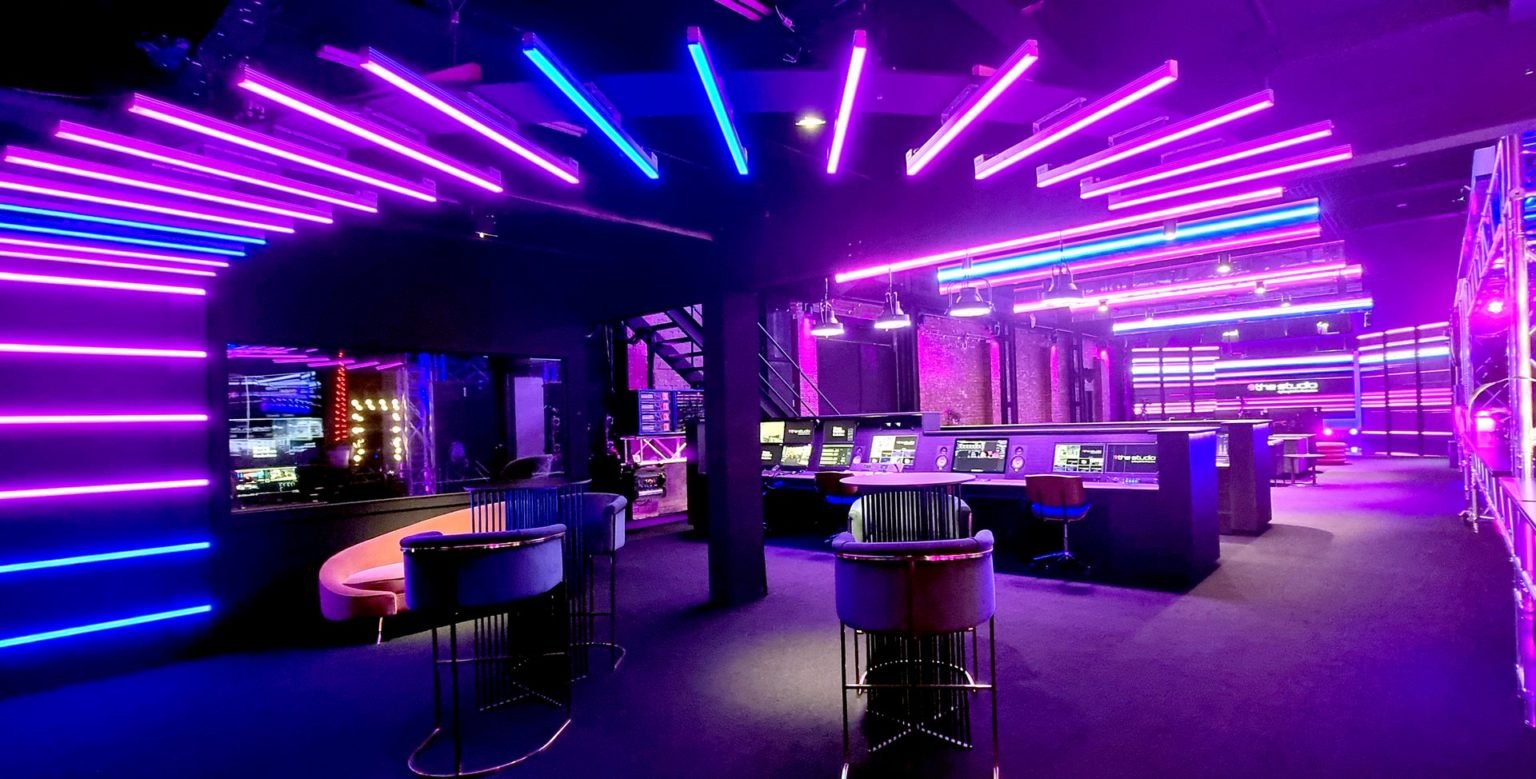
Subscribe to CX E-News
Recently I had the opportunity to design a lighting rig for a new purpose-built studio within the Harry the hirer Productions headquarters in Melbourne, and like all passionate lighting boffins, I embraced
the opportunity to research, play and test fixtures to meet the design brief, and have some fun.
The Harry’s Productions Studio is designed for multiple uses, ranging from broadcast TV studio productions to a hybrid broadcast event space with room for a seated audience. The Studio design also includes spaces for clients to pre-visualise their event, test concepts and content pre-show, and stage rehearsals prior to bumping in at venues without the deadlines of showtime looming. An Infinity Wall set for product shoots (including cars!) with a clean background has also been included.
My starting point was to light the stage and studio area using an LED studio soft panel of some sort, and there is a plethora of options available when it comes to these panels. I had to look past the shiny blue logo of the stalwart companies that have dominated this market segment, and our friends at ShowTools had told me about a new offering that was soon to enter the market, designed in collaboration with Davey Taylor.
Once I tested out the TourPro Soft Panel 300TW and shot it out against some of the other options available, I was convinced that I’d found the fixture for the job. The 300TW has full colour mixing from the Red, Green, Blue, White, Lime and Cyan LED Array with a CRI of 95+ (and a CCT between 2,000K – 10,000K). The output is beautifully soft and wide (64° with on-board diffusor) and of course can hit all the whites you could need between 2,000K – 6,000K. The form factor at 505mm H x 385mm W x 151mm D suited a lightweight stand mount for my side fill, as well as being hung from truss for key light and back light positions.
The TourPro 300TW also has studio mode to modulate fan noise, has full on-board control via the OLED menu and chunky encoders with haptic feedback, 5 and 3 pin XLR, TrueCON power in and through, along with etherCON RJ45 and USB ports. The controllability is top notch with DMX, Artnet, RDM, sACN, with a handy virtual gel library and green shift adjustment. After spending some time with the TourPro Soft Panel 300TW it is obvious that this unit hasn’t been rushed to market and has had a lot of thought put into it, especially noticeable with the solid body construction, robust yoke and reinforced connection point at the spigot. The 4pin XLR to power off V Lock batteries is nice, and small touches like the handle placement and the locking system on the tilt handles once the Panel is focused have definitely come from an experienced LD. We have been so impressed with these LED Soft Panels that extra units have been added into our hire stock as well.
The Studio needed a small factor moving light that could be flexible in filling the space with movement, colour and mid-air beams, and be able to fill-in on studio shoots as eye candy. I considered the standard brand offerings available in Australia and settled on a little fixture I’d first been introduced to at a Jands product launch a couple of years back, the Robe LEDBeam 150.
The LEDBeam 150 has a good pedigree sitting alongside its big sisters in the Spiider and Tarrantula with the same 40W RGBW LED chip set. It is able to push out an amazing array of full saturated colours but more surprising is it’s’ ability to bring pastel colours to the party as well. Important for this studio environment is that the LEDBeam is able to dial up whites between 2700 K – 8000 K and the tungsten emulation mode even red-shifts with thermal delay in the dimming. The zoom range is 3.8° – 60°. Fully zoomed in the LEDBeam creates super-fast sweeping beams and snap into a wide wash instantly. At 60° the unit does lose output across such a wide spread, but at the 30-40° range the LEDBeam works beautifully with a homogenised field and even light coverage and no hot-spotting due to the egg crate design on the lens face.
Its small size of only 337mm H x 244mm W x 149mm D (lens at only 420mm from the bar with a trigger clamp) and 5.7kg was an advantage in choosing the LEDBeam 150, as we were able to create a rigging solution with the units completely hidden by our LED screen truss borders. The 150 is small, but packs a punch. I’ve been getting readings of 17,000+ lux on a medium focus (20,000+ lux fully zoomed in) from our trim height, and it draws a conservative 220w. The LEDBeam has an exceptional build quality and whips through the 460° pan and 228° tilt at lightning pace and almost silently. The tiny base manages to fit cabling and screen onto the one side so it can be positioned away from discerning eyes, with powerCON in and through with the 5 pin DMX, and the lack of 3 pin connectors will make any lighting purist happy. Overall, the Robe LEDBeam 150 is a great little mover and although we’ve all seen them used en-masse in large concert rigs, they will also deliver the same quality output that Robe is getting known for in this type of fixture, which of course, is supplied by Jands.
The addition of the infinity wall set behind the main staging area gave me a chance to work with traditional film/TV lighting techniques and I’ve added some touches using new technology. We’ve built a huge 6m long soft box with a custom aluminium frame above the infinity set, and the HTH Productions rigging boffins have also devised a pulley system to tilt the soft box from straight overhead to an angled front light. We have put ten warm/cool LED soft panels internally, so the lighting colour temperature can be tuned to suit the application. One side of the infinity wall is built with casters and easily swings out of the way to reveal the double access doors, which made bump-in very simple, and no doubt will benefit many shows.
Lighting the actual infinity wall, I wanted to add some flexibility to colour the background using light. I tested quite a few options to achieve a short and high throw and we eventually took a leaf from the theatre lighting playbook using cyc fixtures to create an even wash. Given the nature of what would be shot on the infinity set, I knew I couldn’t compromise on output or evenness of the wash.
In recent years a slew of LED based cyc lights have hit the market and it was the Robert Juliat Dalis Access 863 that stood head and shoulders above the rest. I know Robert Juliat as the first and last name when it comes to quality followspots, but I didn’t have a lot of experience with the rest of their range, so Paul Nicolaou at Show Technology was kind enough to run me through it.
The Dalis is a 1 metre long batten with 24 LED emitters (Red, Green, Royal Blue, Warm White 2200k) and the most detailed asymmetric reflectors I’ve ever seen. It is these reflectors ‘where the magic happens’ and enable the Dalis to throw light evenly up and forward with a 90° vertical beam angle. The output is exceptional, and the colour rendering is second to none. With its theatrical pedigree, the Dalis can dial up just about any coloured gel you would put into a traditional cyc unit. Each of the Dalis can be controlled with up to four segments allowing a colour fade or rainbow effect across your cyc or infinity wall. The Dalis has DMX, Art-Net, RDM, sACN, 5pin XLRs PowerCON in and through, and etherCON RJ45 connectors. With all these connectors, you’d expect a big old panel on the back/side but not on the Dalis and this is where the beauty and design of the unit comes into its own.
The Dalis 860 has a low profile (only 117mm) and a super clean look from the back. This overall look was the deciding aspect that clenched the Dalis as the unit of choice, as presentation is super important to my colleagues at HTH Productions. The rubber feet on the front are also adjustable to allow some tilt when focusing. My only criticism of this unit for our particular application has been the lack of horizontal spread on the beam (which stands to reason when lighting a straight cyc) which makes washing around corners challenging. We have even tested the Dalis 860 as a foot light, which seems to work quite well, and as we’ve been so impressed overall with the Dalis, they too have been added to the rental inventory in addition to the Studio.
For the lighting control system I needed a small footprint desk with parameters to drive four universes for everyday use, and simple operation, as the desk would be operated by a variety of Harry’s staff as well as being expandable for larger shows. I went with an MA Lighting Dot2 XL-F from Show Technology. Craig McPherson, the local Harry the hirer networking guru, came up with an ingenious cabling and DMX distribution system using Cat5 patch panels which makes the whole system very flexible and expandable.
To finish the studio with a traditional broadcast studio look, a modular high-shine floor supplied by Harlequin Flooring has been installed. This set floor creates a double up of the lighting when viewed through the camera lens creating huge looks.
It’s been a fun project during the down time we’re all experiencing, and fantastic to engage with the industry suppliers again. Let’s hope we’re not too far away from designing rigs regularly again!
The Studio lighting rig is completed with the following list
• 12 x Robe LEDBeam 150
• 10 x TourPro Soft Panel
• 10 x Robert Juliat Dalis 860
• 20 x EK Mini Wash
• 10 x Warm/Cool LED Studio Panels (In Soft Box)
• 4 x TourPro Corona Retro
• 19 x ShowPro Truss Mate
• 24 x Elation OctoStrips
• 4 x Robe Robin Tetra Bar 2
• 8 x DMX LED House Lights
• 4 x Robe Robin Spot
• 1 x MA Lighting Dot2 XL-F
Subscribe
Published monthly since 1991, our famous AV industry magazine is free for download or pay for print. Subscribers also receive CX News, our free weekly email with the latest industry news and jobs.

